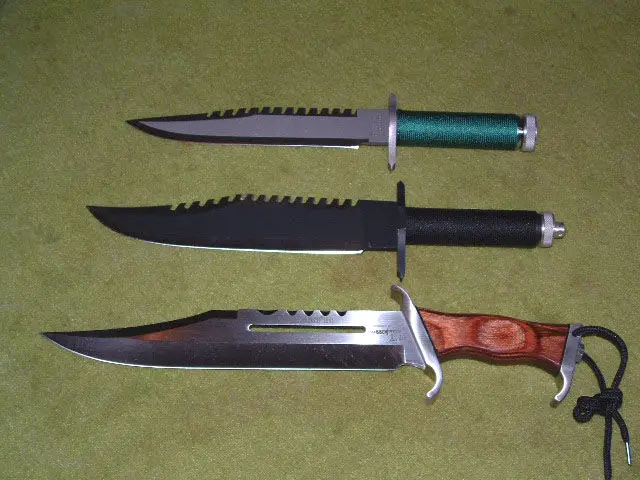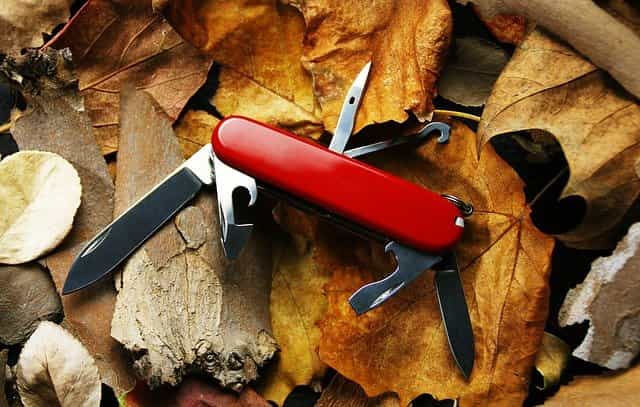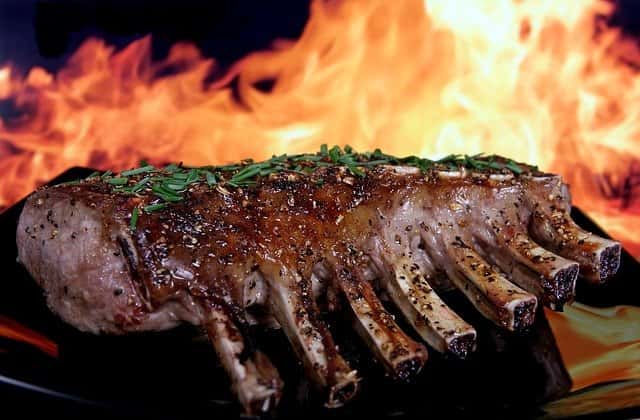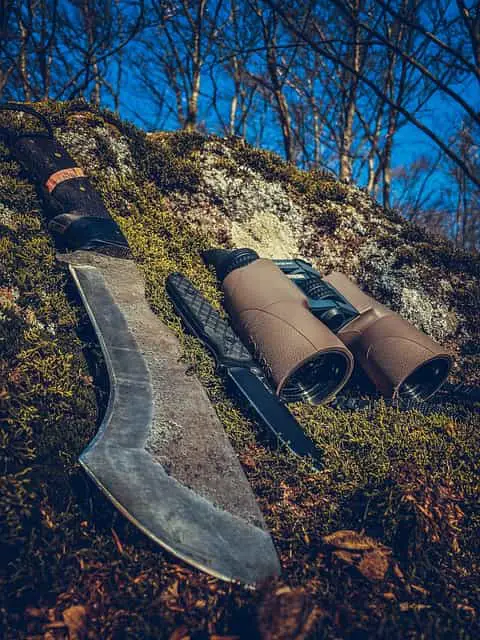Knives come in different shapes, design elements, and sizes.
For some knives, these shapes and sizes are simply aesthetic elements to catch the fancy of the buyer – such as we have on the Coolina knives.
On other knives, these design elements are there to improve the usage of the knife – much like the two points on a tomato knife.
With a cheese knife, though, why do we need to have holes? Are they there for mere aesthetics, or would they contribute to using the knife better?
Read on to find out more, as well as what other elements on your cheese knife mean for you.
Table of Contents
What the Holes in Cheese Knives Are For
The next time you see holes in cheese knives, they are not just there for the aesthetics.
Holes in a cheese knife ensure that the cheese doesn’t stick to the body of the knife when cutting, especially with soft cheese. Thus, the knife cuts through the cheese more effectively and cleaner than if it was in solid form.
Knives used for hard cheese don’t usually have holes in them. These kinds of cheese don’t stick – or they don’t stick as much. Thus, they need all the strength from a solid knife without holes to get to the bottom of the cheese.
Can You Cut Cheese with Other Kinds of Knives?
For sure.
If you don’t have a cheese knife lying around, you can use your paring knife or chef knife.
For mild to hard cheese, you should not have any issues getting through the cheese easily. When it comes to soft cheese, though, the friction from the knife is high and you will most likely end up with a sticky blade.
When you don’t have a cheese knife handy but you have to cut soft, sticky cheese, you can use some water on the knife.
This technique works best with cold cheese that you cut with a warm to hot knife blade. Don’t put the blade directly into the fire, but warm it up with some heated water.
Time to see how well the expression “hot knife through butter” works.
If you don’t deal with a lot of cheese, or you don’t have a knife set, this is a fine way to cut your cheese at home. When you work with a lot of soft cheese, though, save yourself the stress and get a good cheese knife.
Do All Cheese Knives Have Holes in Them?

No, not at all.
Not all cheese is soft, so there is no reason to make all cheese knives with holes in them.
Some of the other styles and designs of cheese knives include:
- Offset cheese knife – firm enough to work with soft cheese (not extremely soft, though) without sticking. They are also thin enough to ensure minimal friction and contact with the sticky cheese.
- Pronged cheese knives – it won’t cut the hard or soft cheese, but it cuts everything else in between. It is the ideal cheese knife for getting a just-fine job done on a wide variety of cheese firmness levels.
- Cheese cleaver – if the name does not give it off already, this is the one that you take to semi-hard and hard cheese levels. They look like a meat cleaver in all ways, only that they are for cheese this time around.
- Flat cheese knife – need to shave or chip hard cheese? This is the right cheese knife for you. They are not called cheese chisel (fun words to call) for nothing.
- Parmesan knife – the parmesan is so special, it got its knife. Also known as the spade knife in some circles, you already know where this one shines best.
What Are the Prongs on The End of a Cheese Knife Used For?
Besides having holes, other design elements on cheese knives contribute to how well they are used.
For example, the prongs.
The prongs on a cheese knife help to serve the cheese without picking it up. They are important for soft cheese, providing a fine pickup method that doesn’t cause the cheese to break.
This is almost like the two points on a tomato knife which are also important for picking up the vegetables without crushing or breaking them.
Do You Need to Have Cheese Knives?
Left to me, no!
They are one of those specialty tools that would look nice on your dining table, but you don’t need to have them.
A good knife will cut your cheese fine. If you care so much about food presentation and all that, though, you can have a go at them.
This does not apply to anyone who cuts a lot of cheese, though. In this case, you don’t have the time to especially ensure every cheese cut comes out fine when using another knife. You can reduce that stress when you get a cheese knife suited to the job.








